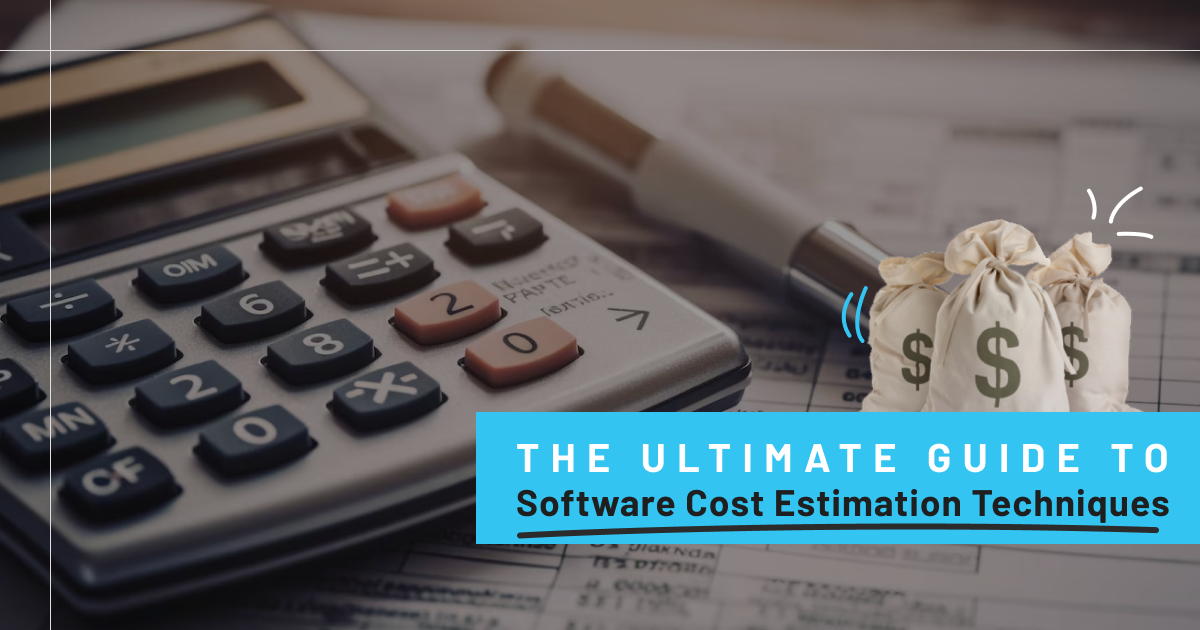The Ultimate Guide to Software Cost Estimation Techniques
 Creole Studios
Creole Studios
Introduction
Estimating the cost of software development projects is a crucial aspect of project management. Accurate software cost estimation ensures that projects stay within budget and are completed on time. However, predicting software development costs can be challenging due to various factors. In this comprehensive guide focused on software cost estimation, we'll delve into the intricacies of estimation techniques. By navigating through these complexities, you'll be equipped to make informed decisions and effectively manage your project's budget.
Why Software Cost Estimation is Important
Accurate cost estimation is essential for several reasons:
Budgeting: Estimating project costs accurately allows organizations to allocate budgetary resources effectively and prevent cost overruns.
Resource Allocation: Cost estimation helps in determining the human and financial resources required for the project, ensuring that the right resources are allocated at the right time.
Schedule Planning: By estimating project costs, organizations can create realistic project timelines, enabling teams to meet deadlines and deliver projects on time.
Risk Management: Cost estimation helps identify potential risks and uncertainties early in the project lifecycle, allowing project teams to develop mitigation strategies and minimize project risks.
What are Software Cost Estimation Techniques?
Software cost estimation techniques are methodologies used to forecast the financial investment required for developing a software product. These techniques employ a variety of approaches, including mathematical models, historical data analysis, expert judgment, and more. The goal is to provide stakeholders with reliable estimates to make informed decisions about resource allocation, budgeting, and project planning.
Common Software Cost Estimation Techniques
Expert Judgment:
- Expert judgment involves seeking input from experienced individuals or teams to estimate project parameters based on their domain knowledge and past experiences. This technique is valuable when historical data is limited or unavailable.
Analogous Estimation:
- Analogous estimation relies on historical data from similar past projects to estimate the cost and duration of the current project. This technique assumes that projects with similar characteristics will have similar costs, making it useful for early-stage estimation.
Parametric Estimation:
- Parametric estimation uses mathematical models and algorithms to estimate project costs based on specific project parameters such as size, complexity, and functionality. This technique is particularly useful for large-scale projects with well-defined parameters.
Bottom-Up Estimation:
- Bottom-up estimation involves breaking down the project into smaller, more manageable components and estimating the cost of each component individually before aggregating the totals. This technique is effective for projects with detailed requirements and deliverables.
Three-Point Estimation:
- Three-point estimation involves estimating the most likely, optimistic, and pessimistic scenarios for project parameters such as cost and duration. These estimates are then combined using statistical techniques to calculate a weighted average, providing a more accurate estimate.
Delphi Method:
- The Delphi method is a consensus-based estimation technique that involves soliciting input from a panel of experts anonymously. The experts provide estimates independently, and the results are aggregated and iteratively refined until a consensus is reached.
Function Point Analysis:
- Function point analysis measures the size and complexity of a software application based on the number and complexity of its functions. Function points are then used to estimate development effort and cost, providing a standardized method for estimating project size.
Key Factors Influencing Software Cost Estimation
Several factors influence software cost estimation, including:
Project Size and Complexity: Larger and more complex projects typically require more resources and, consequently, higher costs.
Scope Definition: A clear and well-defined project scope enables more accurate estimation.
Technology Stack: The choice of technologies and tools significantly impacts development costs.
Team Composition and Skill Level: The expertise and experience of the development team influence productivity and, consequently, costs.
Requirements Volatility: Changes in project requirements during the development process can affect costs.
External Dependencies: Integration with external systems or services may add complexity and cost to the project.
Market Conditions: Market rates for labor and technologies can vary and impact project costs.
Risk Assessment: Identifying and mitigating potential risks can help in better estimation.
Understanding these factors is crucial for developing accurate cost estimates.
Basic Software Cost Estimation Techniques
Expert Judgment: Experienced professionals provide estimates based on their expertise and knowledge of similar projects.
Analogous Estimation: Estimating costs based on similarities with past projects.
Parametric Estimation: Using mathematical models and parameters to estimate costs based on project characteristics.
Bottom-Up Estimation: Estimating costs for individual components or tasks and then aggregating them for the total project cost.
Top-Down Estimation: Estimating costs based on overall project characteristics and then breaking them down into smaller components.
Three-Point Estimation: Using optimistic, pessimistic, and most likely scenarios to calculate a weighted average for cost estimation.
Function Point Analysis: Measuring software size based on functionality to estimate development effort and cost.
Each technique has its advantages and limitations, and the choice depends on factors such as project size, complexity, and available data.
Choosing the Right Estimation Technique
Selecting the most appropriate estimation technique requires careful consideration of various factors:
Project Characteristics: Consider the size, complexity, and nature of the project.
Available Data: Utilize historical data and relevant information to inform your estimation approach.
Expertise: Leverage the expertise of experienced professionals in the field.
Risk Tolerance: Assess the level of risk tolerance within the organization and adjust estimation techniques accordingly.
Flexibility: Be prepared to adjust and refine estimates as the project progresses and new information becomes available.
Conclusion
Software cost estimation is a critical aspect of project management, impacting budgeting, resource allocation, and overall project success. By understanding the various estimation techniques and factors influencing costs, project managers can make informed decisions and improve the accuracy of their estimates. While no estimation method is foolproof, careful consideration of project characteristics and available data can significantly enhance the reliability of cost forecasts. With this comprehensive guide, you're equipped to navigate the complexities of software cost estimation and steer your projects toward success.
Subscribe to my newsletter
Read articles from Creole Studios directly inside your inbox. Subscribe to the newsletter, and don't miss out.
Written by

Creole Studios
Creole Studios
A Leading Mobile app and Web development company in USA with professional and dedicated developers/ resources.